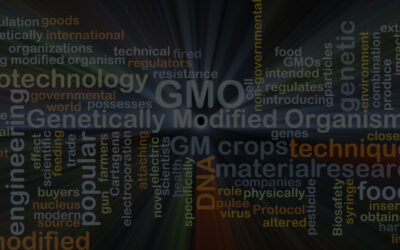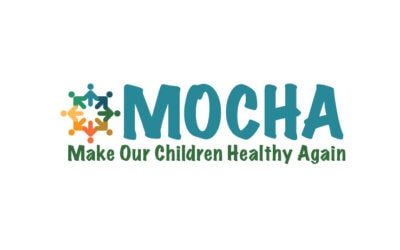By Michelle Perro, M.D., D. Hom.
Caring for children has been my entire life’s work. It requires an open mind to perform this work, particularly in our present environment that challenges the health of this very vulnerable population. For those of us who embrace the role of being children’s health care providers, our own vigilance to their well-being must be finely tuned and forever adapting.
I never had visions of being an activist, an environmentalist, or an academic pediatrician. I am a clinician and educator. Approximately 15 years ago, I began to witness a significant change in the status of children’s health. The changes were global, meaning they involved all aspects of their growth and development. The common denominator to many of their health complaints revolved around gastrointestinal dysfunction, which often manifested as neurocognitive disorders. It is there that my journey and career fork-in-the road began.
Life does not happen in singular events. This is also true for the factors that influence our health. In a traumatic event, there is an action that causes a subsequent problem. Not much discussion there. But in our present climate, children are now faced with several exposures that have only been present in the past 20 years, and many are increasing. For the most part, the health ramifications are unknown and have not been rigorously studied. It is very difficult to tease out the multiple, interactive, and changing root causes of their health issues.
The science regarding multiple toxic exposures on our children’s health is inadequate[1]. When pondering the rapid decline of our children’s health in this short window of time, there are few studies that have examined the effects of combined impacts such as pesticides in their food, water and air, GMOs, multiple industrial chemicals, air pollution, etc. How does one tease out what is the problem causing the symptom? Which children are affected most by which factor? How much of an exposure is required to produce a health effect? What is the role of genetics and epigenetics in their declining health? Why is one sibling affected and others not, even in twin births? I found myself surrounded by questions inadequately being addressed in the literature.
Caring for an ill child comes at a high price to families. Many parents are both working and scrambling for everything from childcare to meals. It is not difficult to see that a tremendous amount of stress is added on to the task of raising a family when there are health challenges. Parents are stressed and stretched, and their health can suffer, creating a negative spiral that can erode the health of entire families.
So, how do you clinically approach chronically ill children, many having been told by their present health care providers and medical system that there is no diagnosis, let alone cure for what they have? An astute clinician will scan for health trends. An experienced clinician will extrapolate data from the present science and make adaptations. A broad-minded clinician will think outside the box and expand their treatment repertoire.
Because the health problems faced by children are so ubiquitous, I have focused recently on factors that affect all children regardless of gender, income, race and other characteristics. I keep coming back to food and water as part of the problem. I focused on food because children have a high intake per pound of bodyweight, to support their growth and metabolism. Has there been a change to our food supply that could explain my clinical observations? As I began to dissect the literature about our food, I was shocked to learn that GMOs were not studied in humans, that certain pesticides were being applied in ever-increasing amounts with known health consequences,[2] and that much of the academic/research community was heavily supported by industry.
I began making nutritional changes in my patients. Focusing on their intestinal health and microbiome, I brought in a multi-prong approach encompassing lifestyle changes, homeopathics, supplements, herbs and osteopathic treatments. And they got better. Significantly better. The treatments were individualized based on the patients’ histories, clinical exams, and extensive laboratory testing. I attribute these successes to the relationship between clean food and health, as well as utilizing my own clinical experience with treating children and my expanded medical toolbox.
Which issues improved? Autism, autoimmune disease, chronic abdominal pain and constipation, ADHD, sleeping issues, immune dysfunction, and the list goes on. Not only did kids get better, but also many chronic diseases completely resolved.
The take-away message is clear. There seems to be a profound problem with what children are eating and our present food supply. There is a rapidly expanding toll on our kids’ health and all of our health. The health issues are both hard to diagnose and treat within the present medical model, so many parents will grow desperate and frustrated as they try to help their children.
Let’s try an experiment: allow children to have access to food without added flavors, colors, emulsifiers and preservatives, food that is not genetically altered, and with as few toxic chemicals as our polluted world will allow. Monitor their health, observe and report our findings. Is that too much to ask?
References
- Silins, Ilona, and Johan Högberg. “Combined Toxic Exposures and Human Health: Biomarkers of Exposure and Effect.” International Journal of Environmental Research and Public Health 8.3 (2011): 629–647. ↑
- Liu, Jianghong, and Erin Schelar. “Pesticide Exposure and Child Neurodevelopment: Summary and Implications.” Workplace health & safety60.5 (2012): 235–243. ↑
Related Posts
Medical Genetic Engineering and Our Children’s Safety
As a pediatrician and advocate for children's health, I recognize that gene therapies for rare conditions like spinal muscular atrophy or Duchenne...
GMOs on X
This is a different type of blog/article. My news stems mostly from X. I grew weary from censorship and factchecking and thought X might be the...
The MAHA Commission Report: A Brief Overview From a Pediatrician’s Lens
The delivery of the MAHA Commission Report in true Warp Speed time is a stark and welcome change to the previous decades of avoidance and lack of...



